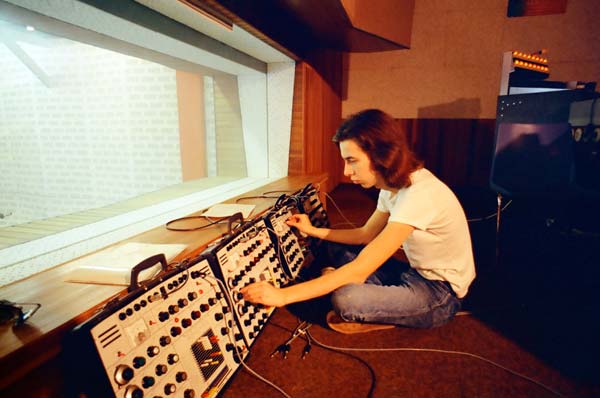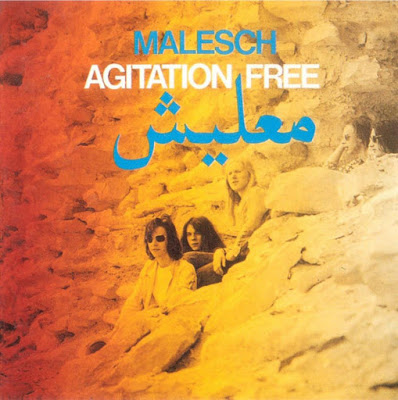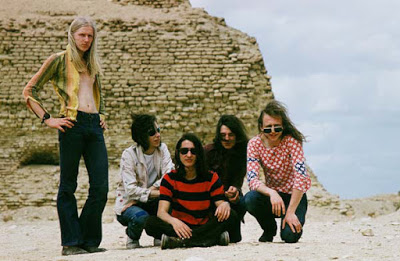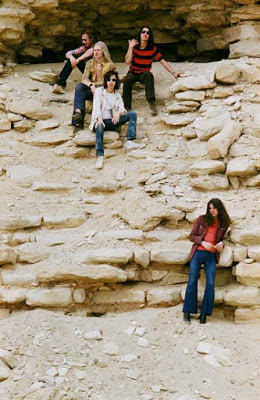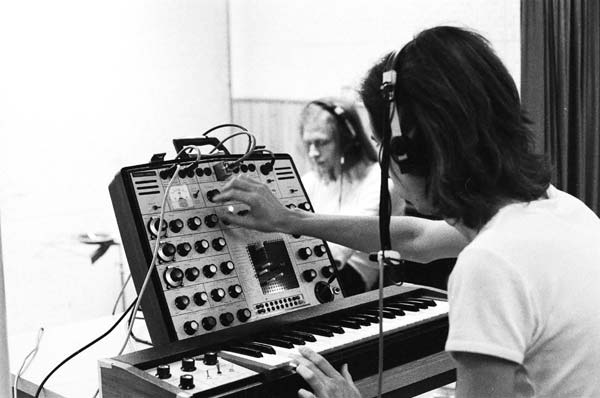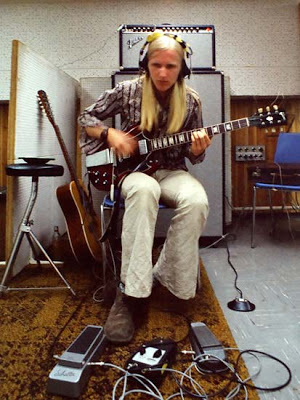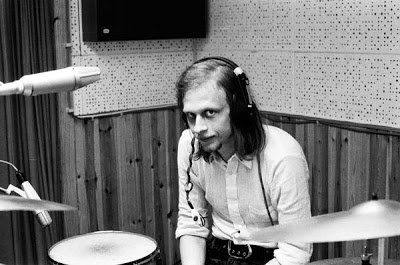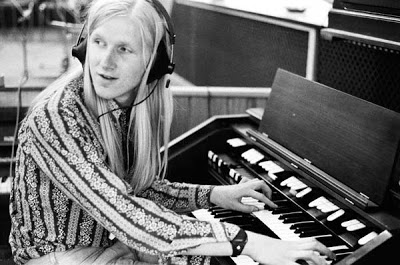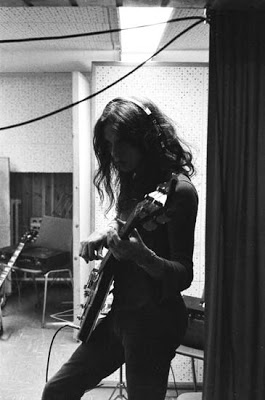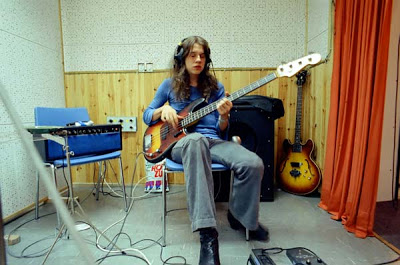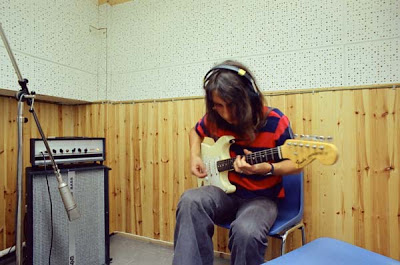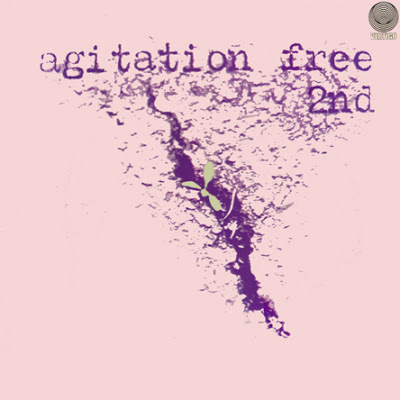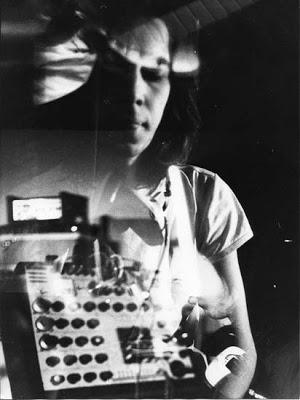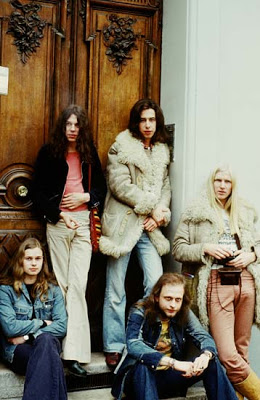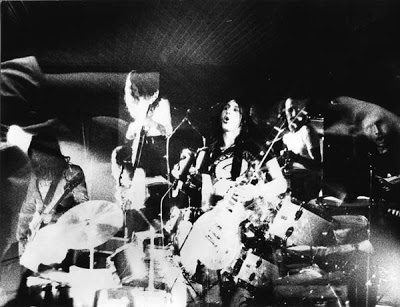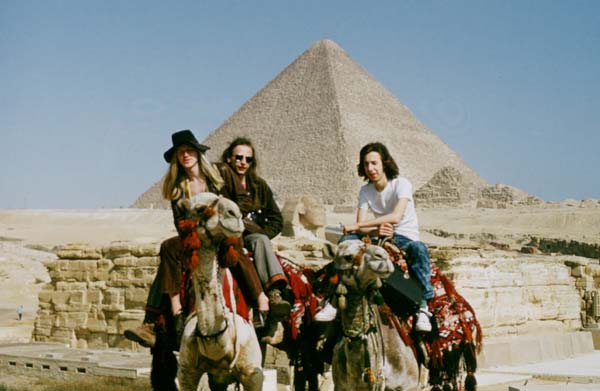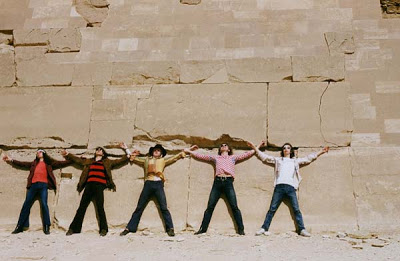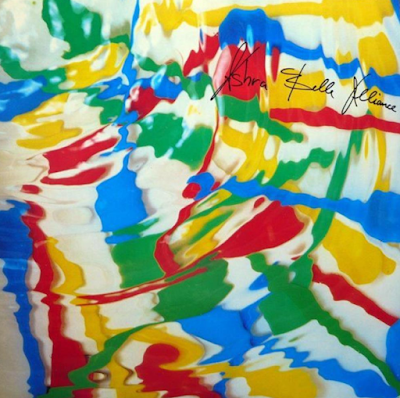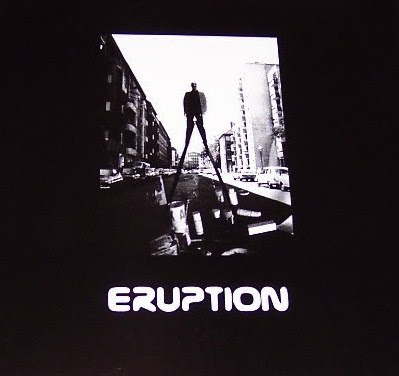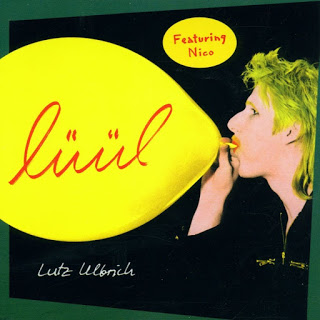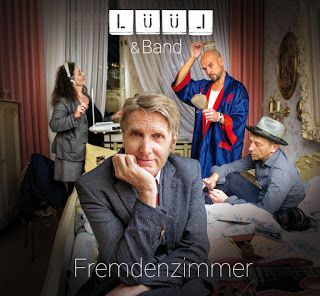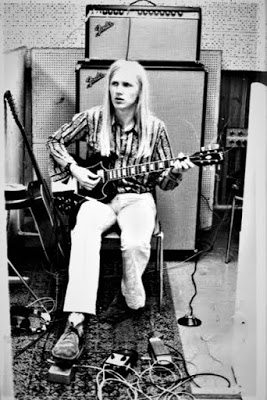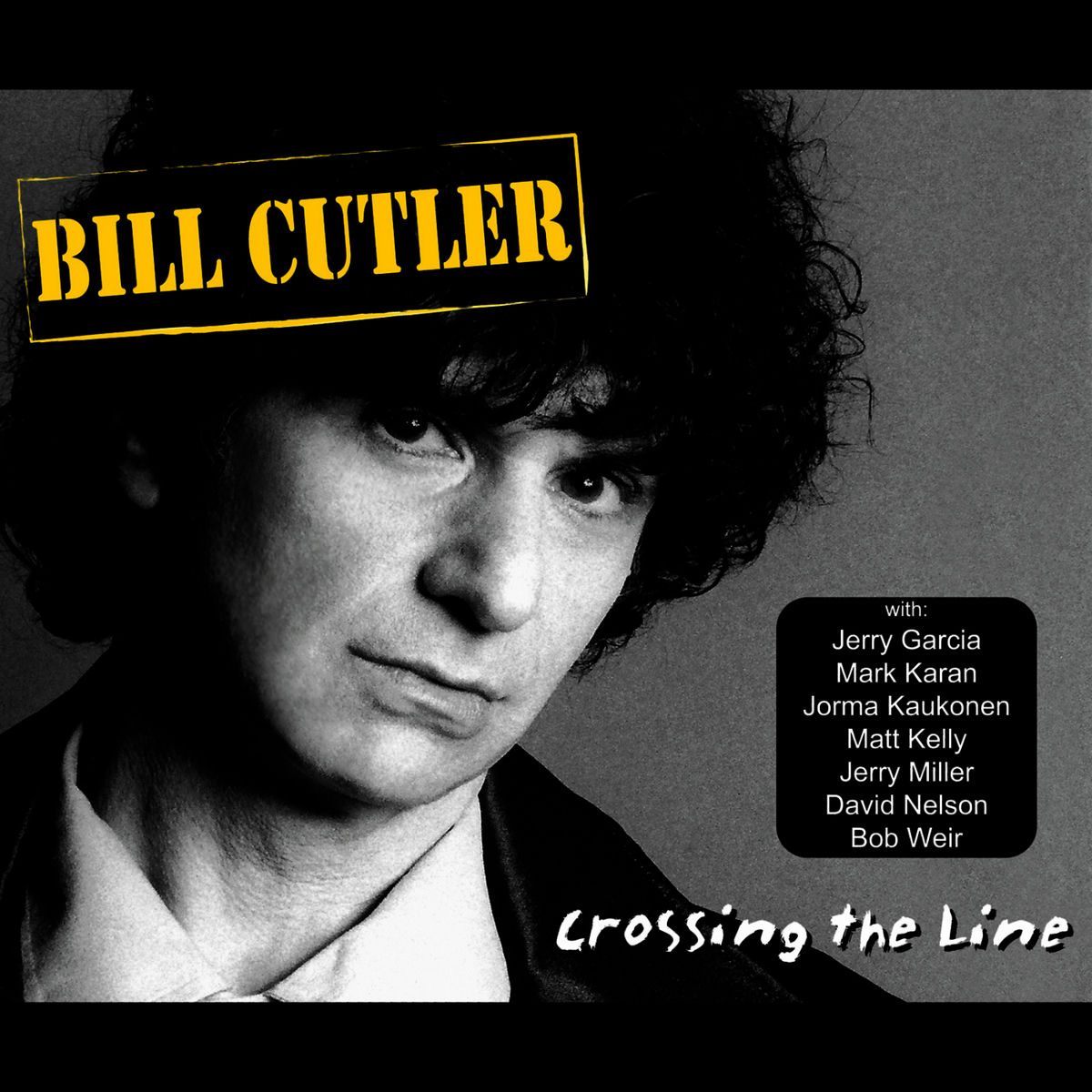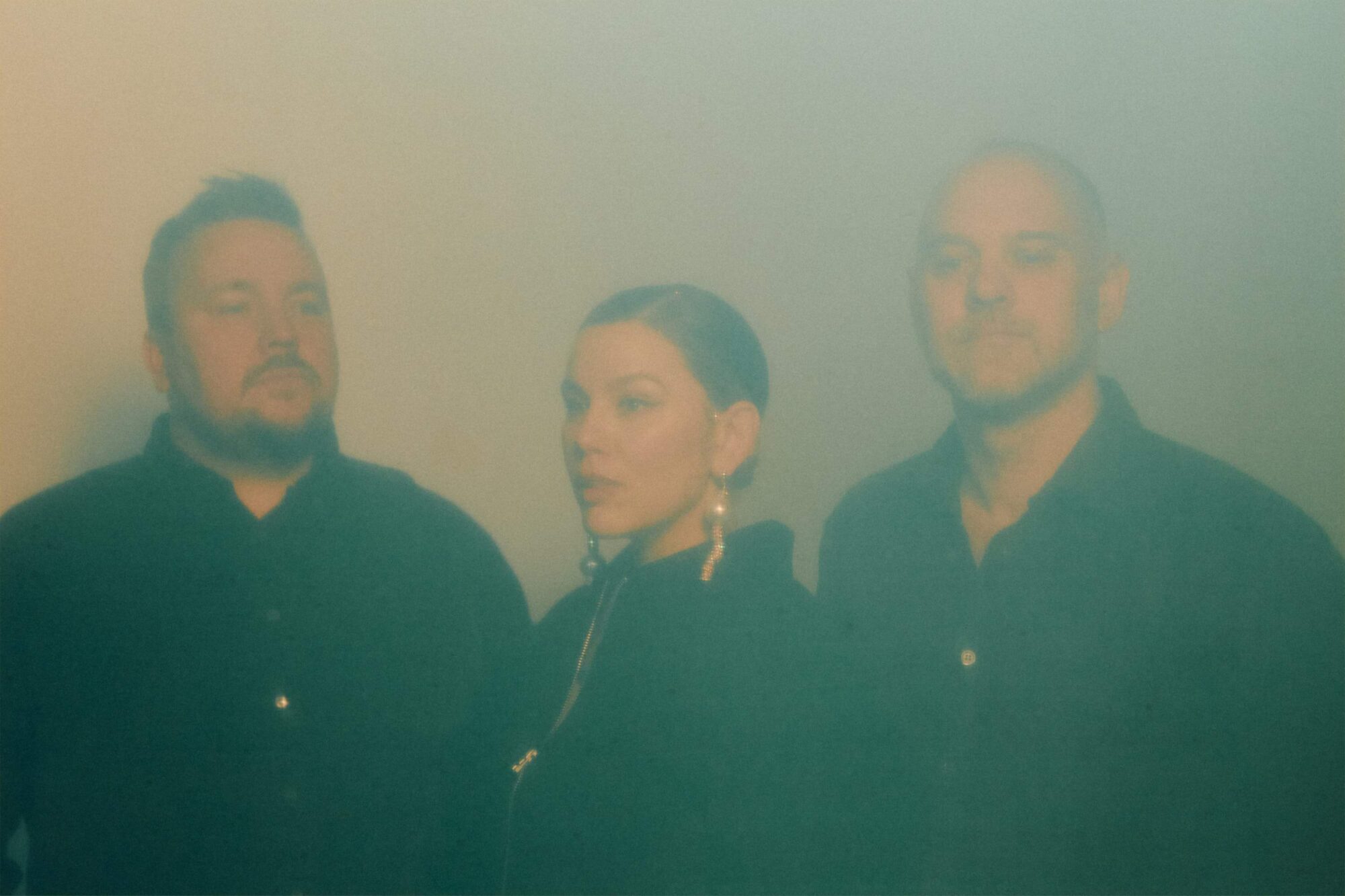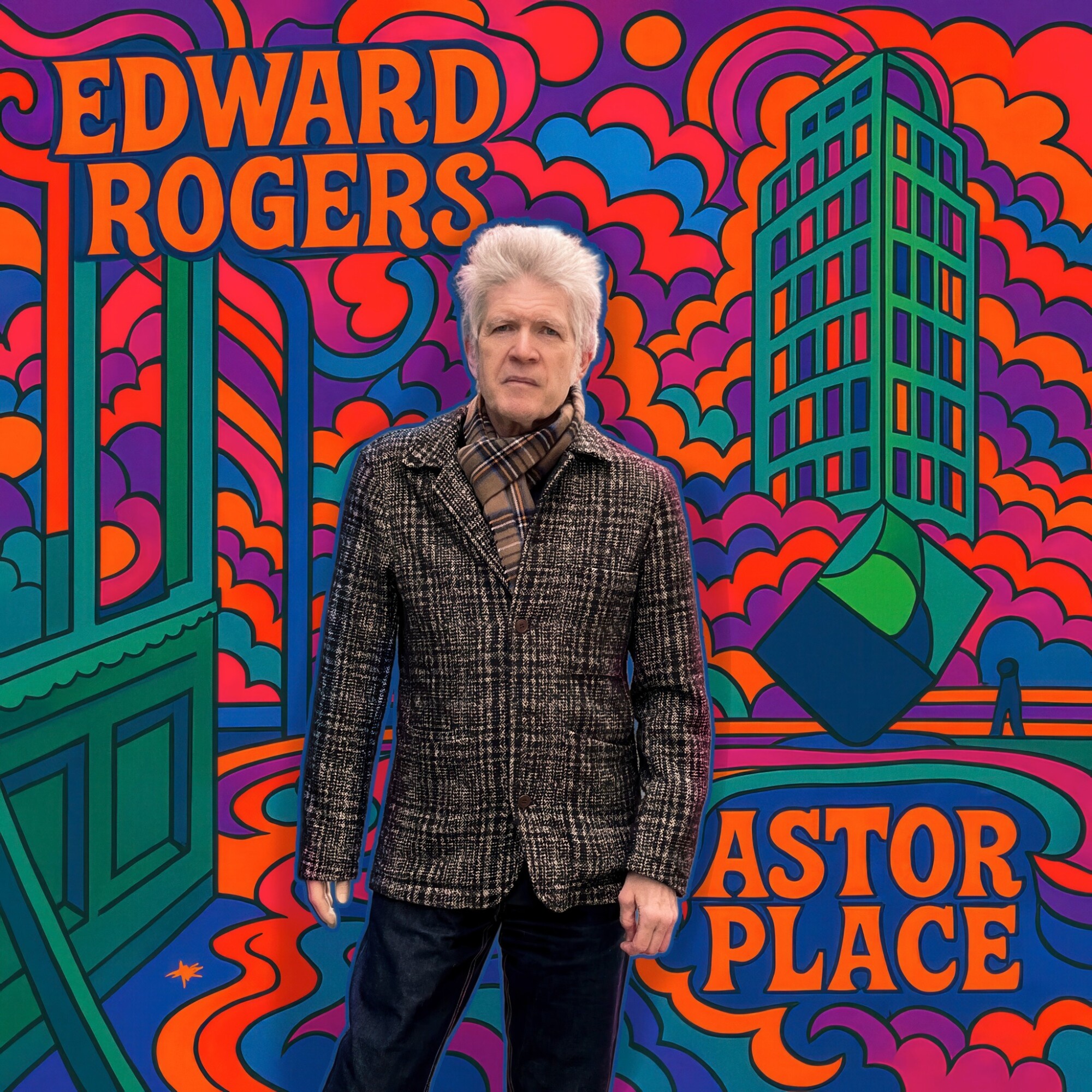Agitation Free interview with Lutz Graf-Ulbrich
Lutz Graf-Ulbrich stands as a pivotal figure in the landscape of German experimental music. A founding member of the pioneering Krautrock band Agitation Free and a key contributor to Ash Ra Tempel (later Ashra), his influence runs deep.
In the late ’70s and early ’80s, he toured extensively with Nico, accompanying her on guitar at numerous performances. He also penned the haunting “Reich der Träume” for her—later featured on his solo debut ‘Lüül,’ released in 1981.
Decades on, Lüül remains creatively restless. He recently published an autobiography that not only traces his remarkable musical journey but also sheds light on his personal and artistic connection with Nico. Far from slowing down, his career continues to unfold with new chapters…curious, fearless, and true to the spirit of exploration that has always defined his work.
Where and when did you grow up? Was music a big part of your family life?
Lutz Graf-Ulbrich: I was born in West Berlin in 1952. My parents could play piano, but we did not have one. I sometimes heard my father play march music, when we were at my grandmothers place, where they had a piano. My mother knew a lot of traditional songs, which she used to sing together with my elder sister. I preferred to play in the forest with my friends, when I was a kid. First musical appearance was with my sister playing flute at Christmas Eve.
When did you begin playing music?
It started when I heard “Roll Over Beethoven” played by the Beatles. The guitar sound hit me and I immediately asked my father to buy a guitar, which he did. I wanted to become musician. I was 10 years old then and began taking guitar lessons.
What was your first instrument? Who were your major influences?
In the beginning The Beatles, The Rolling Stones, The Pretty Things (“LSD”), Kinks, mostly English bands who played beat music or soul music as well as Sam & Dave, Wilson Pickett, etc. Also a band in the neighborhood, who were a bit older and where we heard them rehearse songs like “Shakin’ All Over” and stuff. My first pop song I learned to play was a French song called “La Poupée qui fait non” by Michel Polnareff and of course “The House of the Rising Sun” (The Animals version), which was the song everyone learned to play when beginning with guitar.
What bands were you with prior to the formation of Agitation Free?
First band was The Tigers. We formed together with Christoph Franke who was my friend since we were four years old. When he heard that I had a guitar, he came by with ‘microphones’ taken out of the telephone! He began playing ‘drums’, but as we did not have drums we used big washing powder cans, that was quite popular those days. Later he bought a cheap drum kit. Peter Preis was on guitar, too. The first gig we played was at school, we had four songs: “Get Off of My Cloud”, “Hang On Sloopy”, “Lalala” and already a song I had written “She is Looking Pretty”.
Then it became The Sentries with some more musicians.
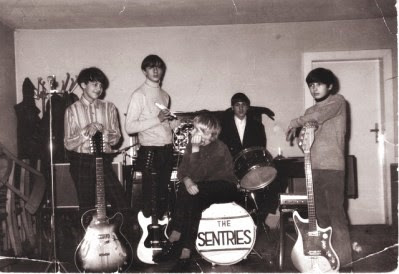
When and where did Agitation Free play their first gig?
I don’t remember the very first one, but one of the first must had been at the St Elisabeth Church, together with some other bands in 1967.
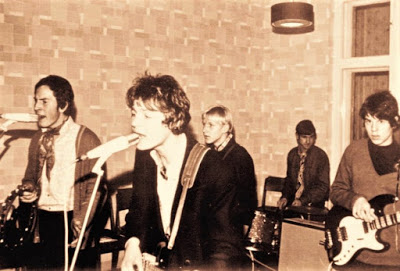
Do you remember the first song the band played?
Not really, but we played “LSD” by The Pretty Things, “2120 South Michigan Avenue” by The Rolling Stones, “Steppin’ Stone” by The Monkeys and others.
How was the band accepted by the audience?
Very well, we always had a good energy and enthusiasm and we were very young. That gave it a special charm, I guess.
What sort of venues did Agitation Free play early on?
School parties, band contests, private parties, some clubs…
Where were they located?
Only in Berlin as it was difficult to have an audience outside of Berlin. We were surrounded by the GDR and west Germany was very far away, you had to cross the GDR to get there and nobody knew you there. Though we made it to Frankfurt and Darmstadt in 1969 to play at the Underground club. John L. was with us then.
How did you decide to use the name ‘Agitation Free’?
From early on we had a ‘light designer’ – Folke Hanfeld, when we were looking for a name, he put his finger into an English dictionary and there was ‘agitation’, which we found suited our approach of music very well. When we did a promo gig at a Club ‘Quasimodo’ there was free entrance, that ‘free’ was put directly behind ‘Agitation’, so we became Agitation Free. You must know that in these times we had already got some reputation in left wing student scene and were kind of a revolutionary band with the aggression and free spirit we had in our music.
What influenced the band’s sound?
When our guitarist Ludwig came back from a trip to England he had seen Pink Floyd and we started listening to that kind of music. Huge influence! When we started the so called ‘Beat Studio’ we had a musical teacher, Swiss avantgarde musician Thomas Kessler. He introduced us to contemporary electronic music like Terry Riley, Philip Glass etc. He also suggested to buy a synthesizer, which was an important move to invent new sounds. Also we went to listen to Indian music with sitar and tabla.
Did the size of audiences increase after the release of your debut – Malesh in 1972?
Yes, of course especially when we were touring in France, more then in Germany!
How did you get signed to Vertigo records?
Thomas Kessler had introduced us to musician Peter Michael Hamel, who was friend with Terry Riley. He had a band called Between and he brought us to Vertigo.
What’s the story behind your debut album?
We had just made this beautiful tour as the first rock band in the Near East, Egypt, Cyprus, Lebanon and Greece. That was a big impact on our music. Michael Fame Günther had recorded sounds on his transportable Uher tape recorder which we used to create the first world music sound. Basically we all were very much impressed with the things we had seen, the people we had met, the pictures in our head, the smell, the unknown, the strange, the wild, the poor. It was a real culture clash!
Where did you record it?
Audio Studio in Berlin, a very big studio which does not exist anymore.
What kind of equipment did you use and who was the producer?
Our usual equipment as you can see on the sleeve, I played a big Fender Showman, Joschi played a Marshall amp, Michael Hoenig, I think used Dynacord Giant and Fame a Vox Bass amp, I believe. Not sure though. Burghard had a Pearly double bass drum kit. There was no real producer, we tried to improvise as we usually did and take parts of it into the record, which was kind of difficult as we normally used to play much longer and did not know how to play short pieces of music.
How many hours did you spend in the studio?
We recorded and mixed everything within one week, do not recall how many hours each day.
Please share your recollections of the sessions. What were the influences and inspirations for the songs recorded?
I remember Mickie Duwe came into the studio once. We told the sound engineer to start the recording although we did not play right away but went to a mediation with Mickie and then one after another began smoothly playing. The atmosphere was very quite and concentrated, a magic moment, when all of a sudden the sound engineers voice interrupted: “should I start recording now?” We were shocked and frustrated. These guys would not know how we were approaching our music, it was a drag. Peter Michael Hamel came by and with his musical genius he right away took us with his minimal organ play in a very nice mood and that helped a lot, too. Great musician and personality!
Would you share your insight on the album’s tracks?
From memory: it starts with “You Play for Us Today” recorded when we flew to Cyprus and the pilot has asked us “You play for us today”? Luckily Fame had record it. Then we begin our musical trip. Later on some music from a belly dance orchestra in “Sahara City” appears, … a big tent in the desert in Giza where we went at night. It was a magical trip during the night seeing the pyramids in the moon light, I will never forget. Then there are some strange noises by Michael’s synthesizer into a sound collage of Cairo streets and then we are going into this minimal music with Peter Michael Hamel and Burghard Rausch playing marimbas.
Side B starts with a sequencer by Michael. A piece I did not really like, then we try to catch the atmosphere at the big Cairo market, the going into Malesh (that word was the word we heard most on this tour) again with Peter Michael and it reflects the relaxed way and attitude we had experienced, then cross fading with my picking and ending in this last composition “Rücksturz”, which we had created together with Joschis fantastic melody guitar. That is what I remember by heart (I have not listened to the record for years as I usually do not hear music at home especially not my own!)
How pleased was the band with the sound of the album?
We liked it and we were proud to have created this very special music on our first studio work. Of course we were not satisfied with the sound engineer who did not really understand what we were trying to do. So unfortunately some of very inspired music has not been recorded.
What, if anything, would you like to have been different from the finished product?
We did not like the cover artwork, but we could not change it. We did that years later with the release of our back catalogue.
How about your second album?
Well, with our new guitar player Stephan Diez there was a completely new influence. He was a much better musician then all of us and took over. He made a lot of compositions for the band and being a jazz guitarist it shows. The whole structure of the music was more organized and we had more discipline and experience while recording. Also we had two weeks in Munich with a better sound engineer.
2nd was released a year later on the same label (Vertigo). What are some of the strongest memories from recording the second LP?
Actually the thing I remember mostly is that I did not get along well with Stephan, which made it for me personally not such a good memory. But I must admit that he was a fantastic musician and when he quit the band right after the recordings he gave us his compositions for free. That was a great gesture. Unfortunately he died last year.
Were you inspired by psychoactive substances like LSD at the time of writing the albums?
Not during the recordings where we did not smoke or drink, but of course we used to smoke hashish all the time before concerts and during rehearsals. A lot!
What happened after the band stopped?
Our last concert took place in Paris, July 1974, the rest of the band went back to Berlin, there were some concerts to be made, even when the band was done. Fame organized a new formation with some guest musicians and they fulfilled the contracts. I stayed in France playing solo in the streets and at festivals. When I came back to Berlin I wanted to make a point and finish the band for good, so I organized a ‘last reunion’ in Berlin in November 1974 where we played with all musicians who had played in the band’s history and were available, even Chris Franke showed up. Fortunately Klaus D. Müller recorded it and it later became Fragments. Later that year I joined Ash Ra Tempel and we played our first gig in December 1974 in Paris and continued as a duo with Manuel Göttsching and myself playing tours and festivals in France and Berlin.
Looking back, what was the highlight of your time in the band?
Our Near East tour, especially Cairo. We stayed there for one week and we really got blown away by all these exotic impressions, the people, the pyramids and the whole atmosphere, it was a real culture clash. Amazing!
Which songs are you most proud of?
“Laila”.
Where and when was your most memorable gig?
That is a very hard one as there were so many. Playing at the Opera Comique in Paris with Nico for the time was a highlight for sure. Playing at the German Super Rock concert at Frankfurt Festhalle with Amon Düül II, Kraan and other famous German bands, too.
Is there any unreleased material?
When we released our back catalogue in the 90’s we went through all the material we could get ahold of and decided what to put on CD’s. Some of the live recordings we did not want to publish and we do not intend to do so in the future for artistic reasons. But we might work on some new music and have already done some recordings two years ago. I hope we can finish them off maybe in 2019 and release it. But things are going slow.
What can you tell us about your friendship with Ash Ra Tempel.
Wow, there is so much. It all began when Manuel Göttsching and I had the same guitar teacher and met each other for the first time at the age of 12 or something. 1969, when we started the Beat Studio with Agitation Free, there was this band Steeple Chase Blues with Manuel and then it became Ash Ra Tempel and they developed very fast, did their first album and we played quite a lot concerts together. In 1974 after Agitation Free was finished I was living in France and got Manuel’s Inventions For Electric Guitar with this outstanding revolutionary echo guitar work. As I was sure I could play that stuff very well too I decided to go back to Berlin to join him with this kind of music. We did one session and it went perfectly well, so we kept on working together since then as a duo. We played a lot of concerts in France, in England and Berlin, just the two of us. One highlight was a concert in 1975 with Can, Nico and others at the Arles Amphitheatre with 8000 people. Such a great gig! We also played in London Roundhouse with Magma. Later the band became Ashra with Harald Grosskopf (interview here) on drums.
Actually Correlations in 1979, but Le Berceau De Cristal was made before, but was not released until later in the 90’s I guess.
Le Berceau De Cristal is a soundtrack to a French film. What was the concept behind it?
Living with Nico and Philippe Garrel in Paris I knew Philippe was looking for a soundtrack for his new movie. Garrel was known as a French avantgarde filmmaker who had done some extraordinary films at a pretty young age already like La cicatrice intérieure (The Inner Scar, 1972) filmed only in desert. He also had worked with Anita Pallenberg and Jean Seberg. For Le Berceau De Cristal there was not much of a concept. Manuel gave Garrel some of his recordings he had done in Berlin and we added some live recordings from concerts in France and everything fitted perfectly into the images of the movie.
It was a nice indication of what will become from Ash Ra Tempel.
We rehearsed three weeks for Correlations at what later became Ufa Fabrik. That were these abandoned old studios of the famous German film production UFA. Tangerine Dream had given us there rehearsal studio. The sessions with Harald were very inspiring and we had a lot of material. So we recorded it later at ERD studio with Udo Arndt and did the mix at the Audio Studio. But Virgin Records wanted us to work harder on the tracks, so we went to Frankfurt into the Panne/Paulsen Studio together with producer Mick Glossop, who really did a great job on finishing the recordings. Belle Alliance followed in 1979. I had been living in the States for half a year and Manuel, Harald and I met in the studio to see what kind of new material we had. We jammed for a week and then began working on the stuff we liked best. It was a very relaxed atmosphere and we all enjoyed these sessions a lot, that’s why Rosi (Manuel’s girlfriend) came up with the title ‘Belle Alliance’.
There was a fantastic project going on under the name of Eruption. You made recordings in 1975, but they were not released back then. I haven’t find much information about it and would truly appreciate if you can tell me who were the members, its concept, the recording material etc.
Conrad Schnitzler had this idea to put together some of the best Berlin musicians in this progressive genre as a somewhat first Berlin Super Group. We did two or three concerts back in 1970 with Manuel Göttsching, Hartmut Enke, Klaus Schulze, Michael Günther, myself and some others. That were fantastic events with a forceful energy. From time to time Conrad invited me to do some other performances and even a record session with Christian Marquard on drums. I never knew what happened to the tapes, but I think Conrad had released them without telling. I think I also found some recordings from Eruption which I put on my website. Basically all these stuff was totally open, crazy jam sessions with no concept. Just doing it.
How about 17 Hippies?
Well, this is a long, fascinating story which still goes on. Founded in 1995 with some musicians out of every musical corner, male, female, professionals and amateurs just for fun with no intend to earn money, go on tour, become famous and all that and only playing acoustic music without any amplifiers. At first there were only three musicians, back pipe, ukulele, double bass! But very soon a lot of musicians joined and the band became very successful playing on every party in Berlin, in the streets. We became more and more musicians and were about 26 in 1998, when we got invited to the USA, Austin Texas SXSW Festival and from that on we toured the world! Europe, USA, Canada, Near East, Japan, China, Australia, New Zealand and a lot of other countries. Just unbelievable. Just check our website and you will see all these crazy pictures and films. A lot of fantastic projects were made, Harald Grosskopf joined the band for a while as well and we also did some experimental concerts as sexy ambient hippies. Especially live, this band is always surprising with a huge range of instruments and sounds and a variety of music from all styles mixed, it is just unbelievable. Great fun to play with. I play banjo in this band.
What were some of the bands you enjoyed in the 1960s and 1970s?
The Beatles, The Rolling Stones, Them, Yardbirds, The Doors, Pink Floyd, The Nice, The Allman Brothers Band, Byrds, Grateful Dead, Santana, Mothers of Invention, King Crimson, Can, Amon Düül II, Tangerine Dream, between and of course Minimal musicians like Terry Riley, Steve Reich, Philip Glass and some Ravi Shankar stuff.
What’s your opinion of Pink Floyd’s debut, Soft Machine and the Canterbury scene in general?
At first it was a bit too crazy for my ears, but my elder sister kept playing The Piper at the Gates of Dawn all the time so I began loving it! With Soft Machine and the Canterbury scene I did not have much to do. I know Michael Hoenig was a big fan of Soft Machine, though.
How was the Agitation Free comeback?
Fantastic! We already had done a comeback record in 1999 River Of Return, but without Michael Hoenig, who was not available as he was working and living in Los Angeles. But in 2007 we got invited by our sponsor Mr. Gen Fujita who had run a wax museum, where Manuel Göttsching, Klaus Schulze, myself and more are standing as wax figure. When he wanted to put Michale Hoenig there it was a good opportunity to reorganize the band for three concerts in Japan and became a wonderful trip with the original line up from 1974! We recorded the concert and released them later as Shibuya Nights. When this record came out we also did a very joyful concert in Berlin and Paris, then Michael Günther left the band and we did some more concerts at Burg Herzberg Festival, London and Berlin. Meanwhile Michael Günther and Gustl Lütjens (g) have passed away. But the rest of the band is still there and who knows what still will be happening?
You released autobiography a few years ago. Was it difficult to remember all the details from the days?
Not really, I seem to have a good ability in memories, friends tell me.
You would accompany Nico on guitar at many of her subsequent concerts and you also wrote song “Reich der Träume” for her, which she sang on your solo debut LP Lüül published in 1981. Would you like to tell us about your relationship with Nico?
Well, to answer that I would have to write a book, which I did: Nico – In the Shadow of the Moon Goddess (Amazon). It is a very complex subject as Nico was a very mystical personality. Of course I had fallen in love with this beautiful woman and we became lovers and also I became her guitarist for about 4-5 years. We toured in Germany, France, Belgium, Netherlands, Spain and USA and Canada. That was a pretty wild life and it felt like being in a movie. Also I became a junkie which was not good for my health. During that time I had written quite a lot of songs which were completely different from what I had done musically with Agitation Free and Ashra. They were like singer/songwriter songs in German language. It took me quite some time to get them published, but with that New York energy back in Berlin 1979-1980, I felt very powerful and finally could record it. Harald Grosskopf helped me with it and Chris Franke produced it in his fantastic studio. As I had written “Reich der Träume” for Nico I called her and asked her, if she could sing it and she did! I think it was first take! Just wonderful! 2016 the Berlin based hardrock band Kadaver covered it, too.
What was she like in private life?
She could be everything and she will always stay this mystical figure which no one can classify. In any case she was the strongest personality I have ever met and there was this aura around her no one could escape from. Most of the time we were living like nomads driving with my Mercedes from Paris to Berlin to Amsterdam and around, playing gigs here and there. She prefer to stay up at night and rather not get up early, curtains always closed. She could be calm, she could be furious, dramatic. Really intense woman.
Would you share your insight on “Reich der Träume”?
Well, it is influenced by the life I lived with Nico, always being kind of in a dream or in a movie, carried away in dreams.
What currently occupies your life?
Most of the time I am doing concerts with Lüül & Band in Germany promoting my new CD Fremdenzimmer which was produced by Moses Schneider at Candy Bomber Studio in the old Flughafen Tempelhof building Berlin. It is known to be the best vintage equipment studio of Europe and Ingo Krauss is a fantastic sound engineer.
Lüül & Band – record release party at Ufa Fabrik, Berlin (actually in the same room Correlations was rehearsed, but it looks quite different now).
“Gut zu wissen”, TV Feature RBB-zibb , “Schnauze voll”… A song I wrote after the split up with Nico “Nächte und Träume”, “Party People”. We also did a new CD with 17 Hippies, which was released in November and we will play a big Germany tour in 2019. Once in a while I meet with Thomas Fanger & Mario Schönwälder and we do some recordings.
Let’s end this interview with some of your favourite albums. Have you found something new lately you would like to recommend to our readers?
I normally do not listen to music, only when I drive car, I do not have many records, so I really have nothing to offer there. Instead I prefer to make music myself! So I have to get back to the old times for my favorite albums:
The Beatles – Revolver
Bob Dylan – Desire
Fleetwood May – Rumours
Pink Floyd – The Piper at The Gates of Dawn
John Cale – Paris 1919
Velvet Underground & Nico
Nico – Desertshore
Doors – Strange Days
Manuel Göttsching – Inventions For Electric Guitar
Le Mystère des Voix Bulgares (compilation)
Tom Waits – Rain Dogs
I like “Small Song” by Lhasa de Sela, which I only discovered recently. And Holger Czukay (Can) gave me his wonderful Movies LP two years ago, too sad he passed away last year. But I am happy I visited him before!
Well thank you very much for giving me the opportunity to talk about my musical career. I appreciate your interest in that kind of music. As a traveler in music I feel very privileged to have been able to visit so many places in the world, to get to know so many different cultures and in my personal life to have made so different sorts of music and still going strong.In these times we all must be aware that we all have to respect one another instead of fighting. So as an old hippie I find it sometimes hard how things develop with our race. I believe that music is a tool to unite with our cultures and people. That, I have learned during my many tours around the world. Thanks for your time and as I wrote in one of my most important songs: “Make your life your own!”
– Klemen Breznikar
Agitation Free interview with Michael Hoenig from 2011.
All photos copyright © of Agitation Free| Lutz Graf-Ulbrich


